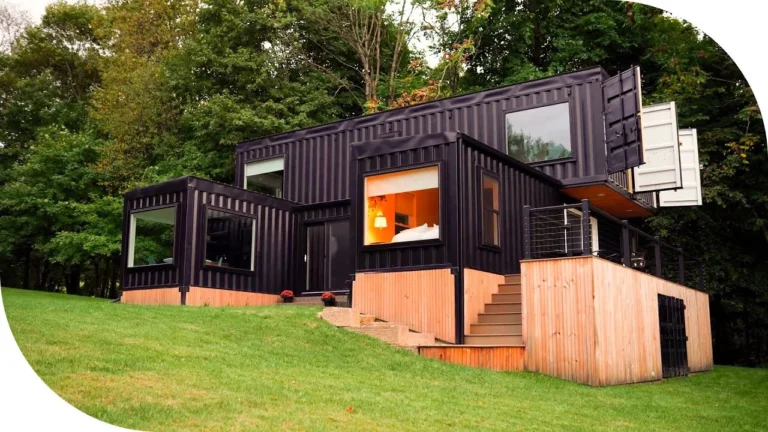
What Are Container Houses?
Basics of Container Homes
Container houses are homes constructed from recycled shipping containers. These large steel boxes, originally designed for transporting goods, are now repurposed into functional, stylish living spaces.
How They Differ from Traditional Homes
Unlike traditional brick-and-mortar houses, container homes are pre-fabricated, modular, and portable. They’re quick to assemble and often much cheaper.
History of Container Homes
When and Where It All Began
The concept of container housing took off in the 1980s, primarily in Europe. Innovators began exploring these steel boxes as a solution to affordable housing.
Why They Became Popular
Their affordability, eco-friendliness, and unique aesthetic made them an instant hit, especially among minimalists and sustainability enthusiasts.
Advantages of Container Houses
Cost-Effectiveness
Comparing Costs with Conventional Homes
One of the biggest draws of container houses is their cost. While traditional homes require significant investment in materials and labor, container homes utilize pre-existing structures, reducing costs by up to 30-50%.
Affordable Housing for All
Container homes provide a viable solution for low-income families, young professionals, and anyone seeking affordable living without compromising on style or functionality.
Sustainability
Reusing Shipping Containers
Millions of shipping containers sit unused globally. By converting these into homes, we reduce waste and repurpose materials, making container housing an eco-friendly option.
Eco-Friendly Construction Practices
Unlike traditional construction, which can harm the environment, building container homes involves minimal land disruption and reduced carbon emissions.
Durability and Strength
Built to Withstand Harsh Conditions
Shipping containers are designed to endure extreme weather at sea. Their sturdy steel frames make them resilient against storms, earthquakes, and other natural disasters.
Longevity of Container Materials
With proper maintenance, these homes can last for decades. The steel structure is resistant to pests, rot, and fire, ensuring a safe and long-lasting dwelling.
Flexibility in Design
Customization Options
Container homes offer endless customization possibilities. From adding windows and doors to creating multi-level structures, the design is limited only by imagination.
Modular Living Spaces
The modular nature of containers allows for easy expansion. Need more space? Just add another container to your existing structure.
Challenges of Container Houses
Insulation and Temperature Control
Managing Heat and Cold
Steel is a poor insulator, which can make container homes unbearably hot in summer and freezing in winter. Proper insulation is essential to maintain comfort.
Innovative Solutions
Using spray foam, wool insulation, or eco-friendly materials can help regulate temperature while maintaining energy efficiency.
Building Regulations and Zoning Laws
Navigating Local Codes
Many areas have specific regulations about non-traditional homes. Understanding and adhering to local building codes is crucial before starting construction.
Common Legal Hurdles
Securing permits and approvals can be challenging. Consulting professionals familiar with container housing laws can simplify the process.
Health and Safety Concerns
Treating Toxic Materials
Shipping containers may contain harmful chemicals like lead-based paint or pesticides. Removing these toxins is necessary before making the container habitable.
Ensuring Proper Ventilation
Due to their steel structure, proper ventilation systems are essential to prevent condensation and improve indoor air quality.
Designing and Building a Container House
Planning Your Container Home
Choosing the Right Location
Pick a site with stable ground, good drainage, and accessibility to utilities like water and electricity.
Budgeting for Construction
While containers themselves are affordable, factor in additional costs for insulation, plumbing, and interior design.
Construction Process
Finding the Right Containers
Look for containers in good condition with minimal rust or dents. High-cube containers are ideal for extra ceiling height.
Transforming Containers into Homes
Cut openings for windows and doors, install insulation, and design the interior according to your preferences.
Innovative Design Ideas
Open-Concept Living
Maximize the interior space by opting for open layouts. Large windows and sliding doors can make the home feel more spacious.
Adding Green Roofs and Solar Panels
Enhance sustainability by installing solar panels for energy and using green roofs for insulation and aesthetics.
The Future of Container Houses
Trends in Container Housing
Smart Homes Using Containers
With technology integration, container homes can become smart spaces equipped with automated lighting, temperature control, and security systems.
Community Projects with Container Homes
Entire neighborhoods and apartment complexes made from containers are gaining popularity, showcasing their potential for urban development.
Expanding Their Global Reach
Increasing Popularity in Urban Areas
Container homes are a practical solution for urban housing crises due to their compact design and affordability.
Adopting Container Homes for Emergency Shelters
Their portability and quick assembly make container homes ideal for disaster relief and temporary housing.
Conclusion
Container houses are a modern solution to housing challenges, offering affordability, sustainability, and creative design potential. While they come with challenges like insulation and zoning laws, the benefits far outweigh the drawbacks. With the right planning and execution, container homes can revolutionize the housing industry.
FAQs
1. How much does a container house cost?
Costs vary depending on design and location but typically range between $10,000 to $100,000.
2. Are container houses eco-friendly?
Yes, they reuse materials and reduce construction waste, making them a sustainable option.
3. Can container homes withstand extreme weather?
Absolutely! Their steel frames are designed to endure harsh conditions, including storms and earthquakes.
4. What is the lifespan of a container house?
With proper maintenance, container homes can last 25-50 years or more.
5. Do container houses require special maintenance?
Yes, regular checks for rust and proper sealing are necessary to maintain their durability.